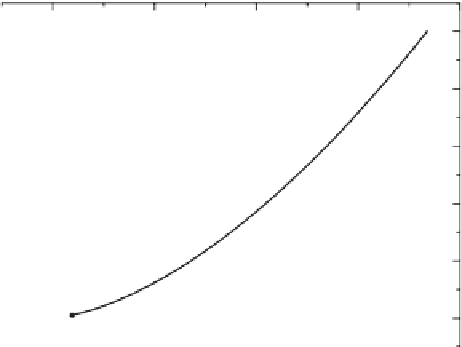Geoscience Reference
In-Depth Information
Fig. 2.2
In-cloud updraft speed and cloud particle terminal velocities for the two input cloud-base
CCN size spectra with mean volume radius (mvr) equal to (i) 2.2 μm and (ii) 2.5 μm. CCN cloud
condensation nuclei
Cloud-base vertical velocity equal to 1 cm/s has been used for the model com-
putations in the following. The in-cloud updraft speed and cloud particle terminal
velocities are given in Fig.
2.2
for the two input cloud-base CCN size spectra with
mean volume radius (mvr) equal to (i) 2.2 μm and (ii) 2.5 μm. The in-cloud updraft
speed
W
is the same for both CCN spectra since
Wwfz
=
*
(Eq. 1.6) and depends
only on the persistent cloud-base primary perturbation speed
w
*
originating from
MFC by deliquescence on hygroscopic nuclei at surface levels in humid environ-
ment (see Sect. 1.3). Cloud LWC increases with height (Fig.
2.3
) associated with
the increase in cloud particle mean volume radius (Fig.
2.4
) and terminal velocities
(Fig.
2.2
). The cloud particles originating from the larger size CCN (mvr = 2.5 μm)
are associated with larger cloud LWCs, larger mean volume radii, and, therefore,
larger terminal fall speeds at all levels.
The turbulent vertical velocity perturbation
w
*
at cloud-base level (1 km) is equal
to 0.01 m/s or 1 cm/s. The corresponding cloud-base temperature perturbation
θ
*
is
then computed from the equation:
g
w
=
θ
θ
*
*
v
θ
v
θ
=
w
.
*
*
g
Substituting
w
*
= 1 cm/s,
θ
v
= 273 + 30 = 303 K and
g
= 980.6 cm/s
2
, the temperature
















































































Search WWH ::

Custom Search